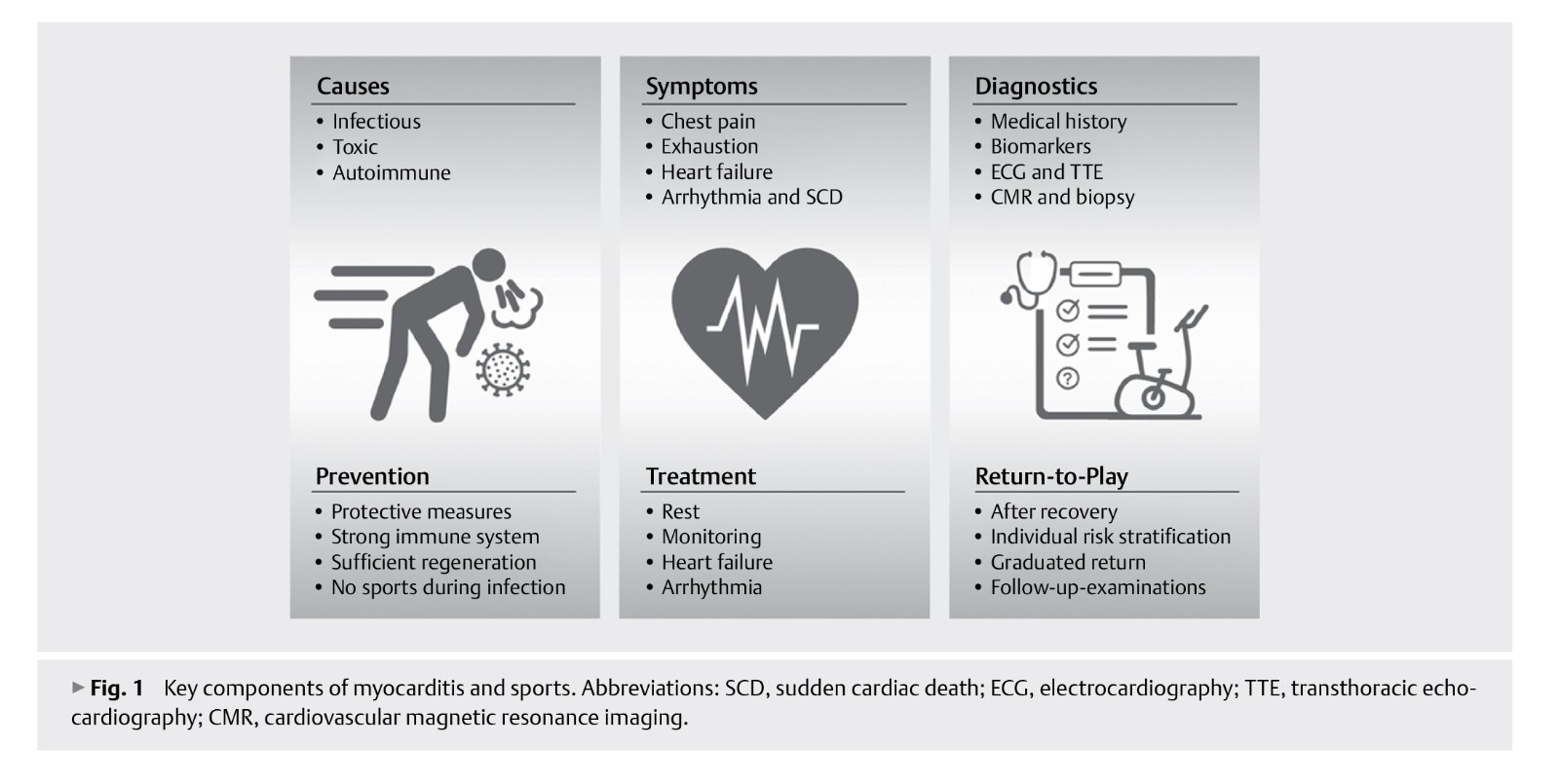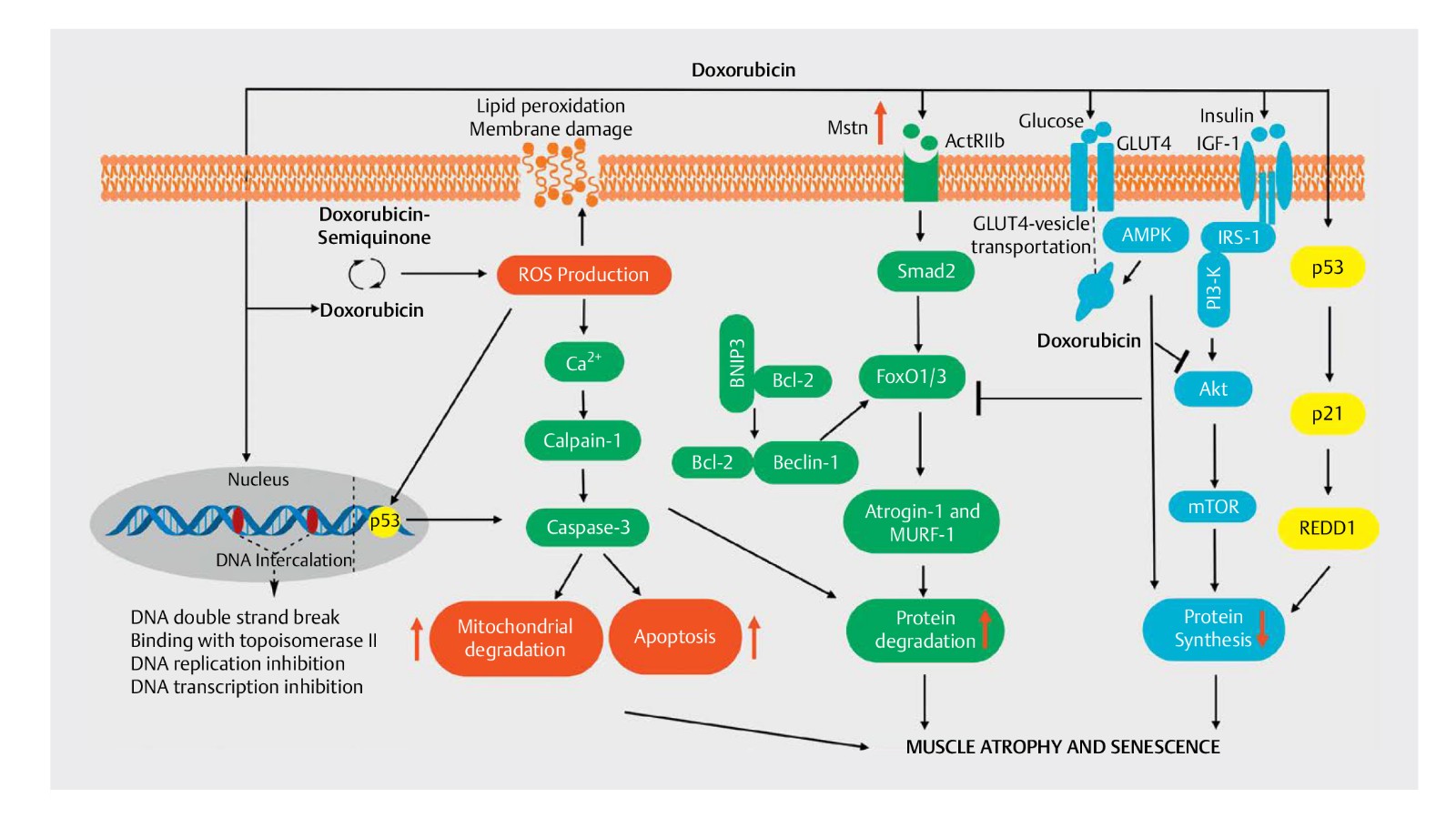
Free Access Content
Sports, Myocarditis and COVID-19: Diagnostics, Prevention and Return-to-play Strategies
Schmidt T et al.
Myocarditis is an umbrella term for non-ischemic myocardial inflammation and remains a leading cause of sudden cardiac death in active individuals and athletes. Accurate diagnosing is challenging and diseases could often remain undetected. In the majority of cases, acute myocarditis resolves favourably. However, a relevant proportion of patients may have an increased risk of prognostically relevant cardiac arrhythmias and/or the development and progression of maladaptive myocardial remodelling (dilated cardiomyopathy). This review provides current knowledge on myocarditis and sports with special regard to the COVID-19 pandemic. Possible causes, common symptoms and proposed diagnostics are summarized. The relevance of temporary avoidance of intensive sports activities for both the prevention and therapy of acute myocarditis is discussed. Risk stratification, specific return-to-play recommendations and proposed follow-up diagnostics (also after COVID-19 infection) are presented.

Andreou C, Matsakas A.
Doxorubicin is an anti-neoplasmic drug that prevents DNA replication but induces senescence and cellular toxicity. Intensive research has focused on strategies to alleviate the doxorubicin-induced skeletal myotoxicity. The aim of the present review is to critically discuss the relevant scientific evidence about the role of exercise and growth factor administration and offer novel insights about newly developed-tools to combat the adverse drug reactions of doxorubicin treatment on skeletal muscle. In the first part, the authors discuss current data and mechanistic details on the impact of doxorubicin on skeletal myotoxicity. Andreou & Matsakas next review key aspects about the role of regular exercise and the impact of growth factors, administered either pharmacologically or via genetic interventions. Future strategies such as combination of exercise and growth factor administration remain to be established to combat the pharmacologically-induced myotoxicity.

